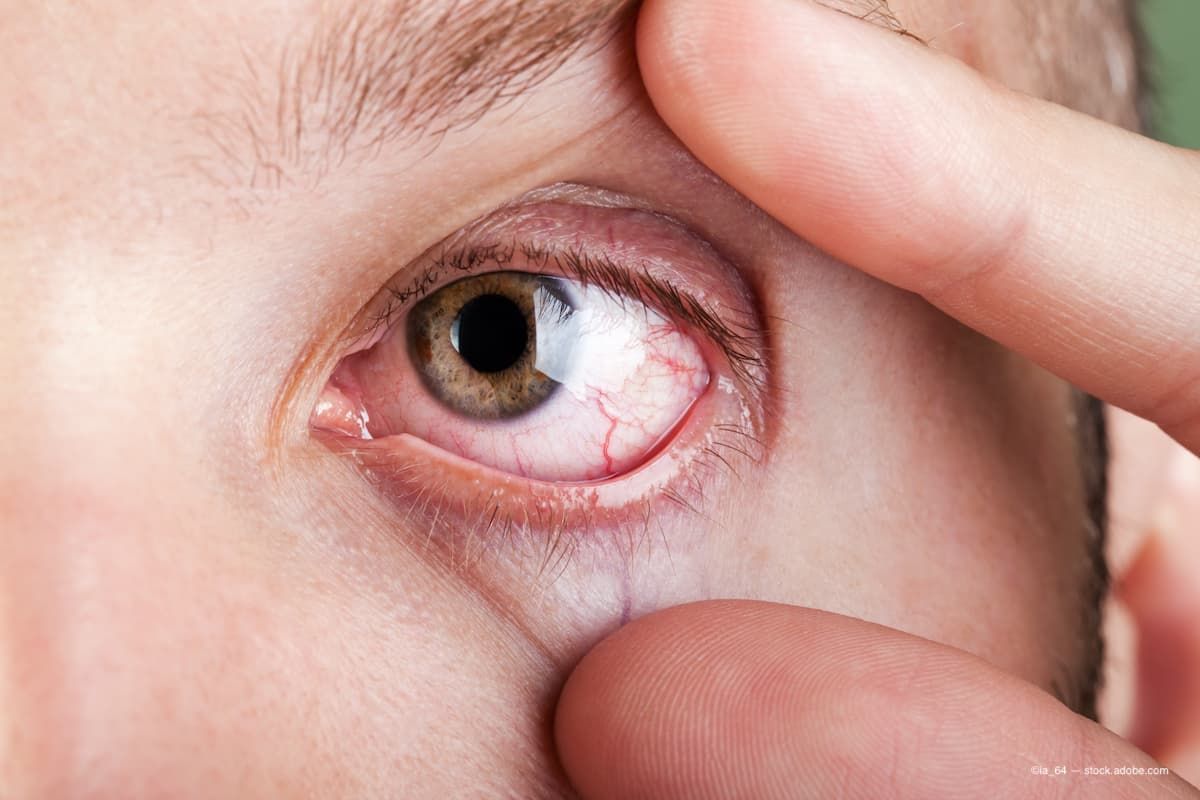- COVID-19
- Biosimilars
- Cataract Therapeutics
- DME
- Gene Therapy
- Workplace
- Ptosis
- Optic Relief
- Imaging
- Geographic Atrophy
- AMD
- Presbyopia
- Ocular Surface Disease
- Practice Management
- Pediatrics
- Surgery
- Therapeutics
- Optometry
- Retina
- Cataract
- Pharmacy
- IOL
- Dry Eye
- Understanding Antibiotic Resistance
- Refractive
- Cornea
- Glaucoma
- OCT
- Ocular Allergy
- Clinical Diagnosis
- Technology
Shape shifting: A punctal plug that fits securely into the punctum
A new, larger 0.6-mm temporary plug is designed with a tapered edge.
(Image Credit: AdobeStock/ia_64)

Reviewed by Robert Latkany, MD
Silicone punctal plugs have been the decades-long mainstay for physicians treating patients with dry eye. The plugs do their job of preventing loss of tears, but they are associated with a few complications.
Robert Latkany, MD, who is in private practice in New York, New York, devised a punctal plug—the Soft Plug Extended Duration 180-T (OASIS Medical)—that may circumvent the issues associated with both silicone plugs and other existing temporary plugs. Silicone plugs can often fall out as early as the next follow-up visit, patients frequently complain of a foreign body sensation, and they can result in the formation of a pyogenic granuloma in the punctum. Temporary plugs are sometimes difficult to insert and are often undersized.
Evolving plug technology
Over the course of his career, Latkany has relied heavily on punctal plugs to treat patients with pure aqueous deficiency with or without meibomian gland dysfunction. He recounted that approximately 2 decades ago, he transitioned from using silicone plugs with their inherent problems to those that were made of an absorbent synthetic material intended to be temporary, with the potential to remain in place for up to 180 days. Now, he no longer has to deal with plugs falling out, pyogenic granulomas, or complaints of a foreign body sensation. Patient acceptance is also higher.
Although this technology seems like an almost perfect solution, the currently available plug sizes range only from 0.2 to 0.5 mm in diameter. In Latkany’s experience, most of the plugs he inserts are on the larger end of the spectrum because most patients have larger punctal openings.
“The patient will receive the most benefit from a larger diameter plug,” Latkany told Ophthalmology Times. “The wider the plug, the more tears are retained and the greater the symptom relief.”
An issue that led Latkany to design a new device is that the currently available plugs are cylindrical on both sides, with no tapering of the tip. “The clinician is therefore inserting a rounded cylindrical object into an oval or linear punctal opening, which can result in some resistance to insertion because of the differences in shapes,” he said.
In addition to the shape, he also wanted a plug that was wider than 0.5 mm to be available. Ultimately, his ideas resulted in the creation of a plug that is nearly one-size-fits-all; it is tapered at one end and is slightly larger, at 0.6 mm in diameter. “This is easier to insert because of the tapered edge and [its ability to] fit into a smaller opening,” he said.
The tapered tip end is 0.25 mm wide and the bulk of the plug is 0.6 mm wide. “This results in tear blockage in the canaliculus with a larger plug, as well as the ability to insert the plug into most punctal openings,” he said.
Latkany reported that he now can insert these larger temporary plugs in 95% of his patients. Although it may still be possible to insert these tapered plugs into the less common 0.2- or 0.3-mm openings, punctal dilation with a punctal dilator may be necessary beforehand. There is a small learning curve associated with inserting these tapered plugs.
“Because of the tapered edge, the plugs are inserted deeper into the Styrofoam package inserts, so grabbing them with forceps while using a slit lamp may be necessary,” he said. “In very large punctal openings, they may immediately pop back out after insertion. To correct this, I advise gently pulling on the lid to tighten the punctal opening just before inserting the plug, then quickly tap the plug further into the ampulla.” Moreover, the benefit is that more tears are occluded using the larger plug, according to Latkany.
Conclusion
This Soft Plug Extended Duration 180-T tapered temporary plug is made of polydioxanone, which is an absorbable synthetic material. The plugs are supplied sterile, and there are 2 plugs per package so that a plug can be placed into each canaliculus, according to the manufacturer. “The beauty of the design is that it will fit into most openings and clinicians don’t have to spend time determining which size may be optimal for individual patients,” he said.
The Soft Plug Extended Duration 180-T plug was approved for use in the United States in 2022, and international approval is pending.

Robert Latkany, MD
E: rlatkany@gmail.com
Latkany is in private practice at Physician Eyecare of New York, with 2 office locations in New York, New York, and Purchase, New York. He is a consultant to OASIS Medical.

